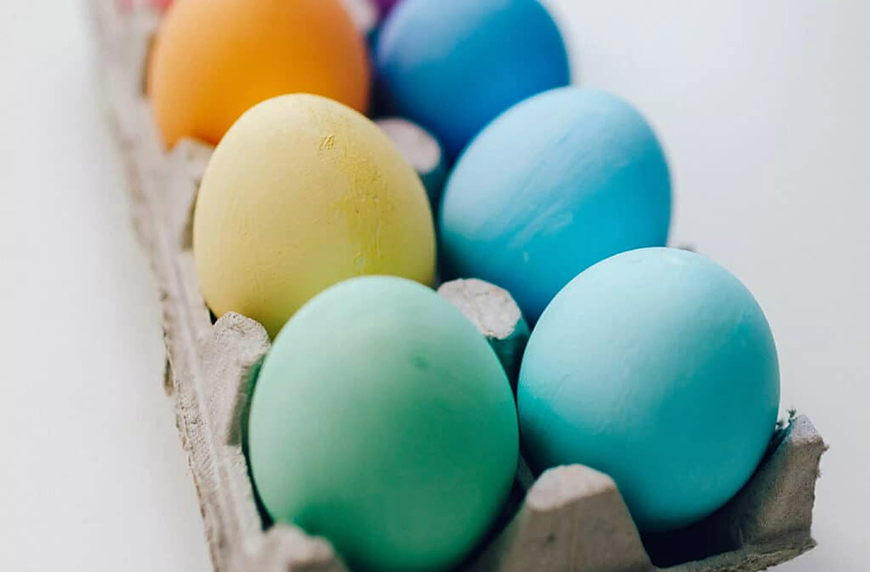How to Make Natural Easter Egg Dyes with Fruits and Veggies
Learn how to make natural Easter egg dyes using avocado skins, onion peels, and other fruits and veggies you already have.

Published
Easter is right around the corner, and you know what that means: It's time to start saving your veggie scraps. Those colorful peels that typically go straight into your compost bin can be used to make natural Easter egg dyes.
Typically, hard-boiled eggs are dyed with store-bought kits—and most use artificial dyes to get those pretty pastel hues. If you need a sustainable option that uses all-natural fruit and vegetable extracts, try this option. (It even comes with everything you need to grow your own grass for the eggs to rest in!)
But if you're looking for a solution using what you already have, this is the only guide you'll need. After boiling your eggs, use one of the natural Easter egg dyes below, which are made using avocado skins, spinach, beets, onions, and more.
How to Make Natural Easter Egg Dyes

Using the ingredients below to make natural Easter egg dyes is simple. For each, bring one cup of water to a boil with your ingredient of choice, whether that's leftover onion skins or a handful of blueberries. Add as much or as little of that ingredient as you want, depending on how deep you want the color to be.
Once the water reaches a boil, simmer for 20 minutes. Strain out the ingredient (and compost it!), then add a tablespoon of white vinegar to the dye. Once the dye has cooled, add the eggs. Let the eggs soak in the refrigerator overnight, which will intensify the color. In the morning, you'll find jaw-dropping Easter eggs that are sure to impress.
Ingredients for Your Natural Easter Egg Dyes

Are you ready to dye your Easter eggs? Use the ingredients below, depending on the color you wish to achieve. Don't be afraid to use extra. Even if the dye has a deep color, it's likely that the color of the egg won't turn out quite as deep.
1. Pink
2. Blue
For blue dye, try blueberries or red cabbage.

Fillable Paper Easter Eggs
Use code BOGOEGGS to get a free set of Fillable Paper Eggs! You must add two items to your cart in order for the second to ring up as free.
3. Green
For green dye, use a couple big handfuls of spinach or red onion skins.
4. Yellow
For yellow dye, use a few tablespoons of ground turmeric.
5. Orange
For orange dye, use yellow onion skins or a few tablespoons of chili power.

Can You Recycle Plastic Easter Eggs? How to Dispose of Them Responsibly
With Easter coming up, you may be wondering: Are plastic Easter eggs recyclable? Here's how to dispose of them responsibly.

This Is the Carbon Footprint of Your Easter Dinner
Curious about the carbon emissions associated with your Easter feast? We broke it down for you and calculated the average carbon footprint of an Easter dinner.

8 Ways to Have an Eco-Friendly Easter, From Candy to Decor
Here's everything you need to know to have an eco-friendly Easter celebration, from dyeing eggs to filling Easter baskets.

